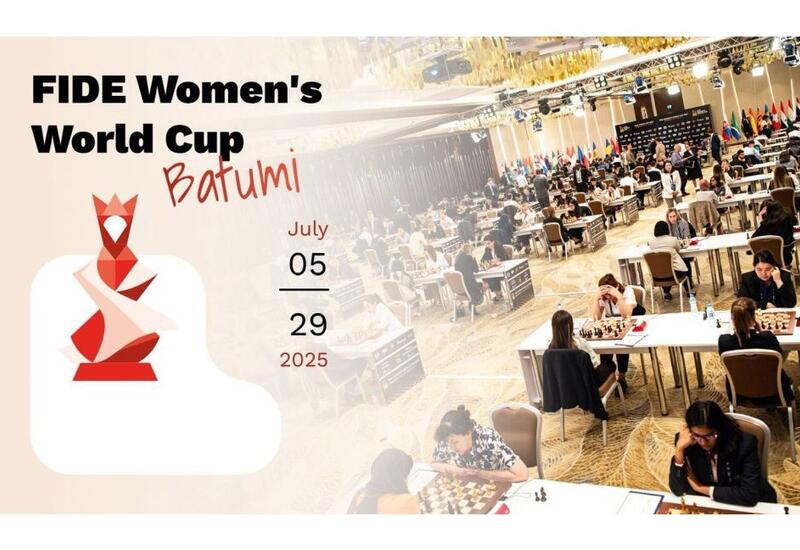From the picturesque coastal city, 107 of the globe`s most formidable female grandmasters and international masters will embark on a grueling knockout journey. Their ultimate goal? To secure one of the three coveted spots in the 2026 Candidates Tournament, the penultimate step before challenging the reigning Women`s World Champion, Ju Wenjun. The prize pool, a substantial US$691,250, with US$50,000 awaiting the champion, adds a tangible reward to the immense prestige at stake.
The Path to the Throne: Qualification and Legacy
The FIDE Women`s World Cup has rapidly become a cornerstone event in the international chess calendar, carving out legacies and launching careers. The defending champion, Alexandra Goryachkina, who clinched the title in Baku, Azerbaijan, in 2023, returns as the sixth seed, a testament to her consistent prowess. Her presence, along with other seasoned contenders, underscores the intense competition.
Did You Know?
The winner of the FIDE Women`s Candidates Tournament earns the right to challenge the current Women`s World Champion. This tournament is therefore a vital stepping stone, making the World Cup qualification spots highly sought after.
India`s Chess Offensive: Humpy Leads a Formidable Contingent
For Indian chess enthusiasts, the 2025 World Cup holds particular significance. A robust contingent of nine Indian players is poised to make their mark, spearheaded by the veteran and fourth seed, Koneru Humpy. Humpy, a former World Rapid Champion and a perennial contender, embodies India`s surging strength in women`s chess. Her recent strong performances suggest she is in prime form to make a deep run.
Joining Humpy in receiving a crucial first-round bye are three other Indian luminaries: Harika Dronavalli (10th seed), Vaishali Rameshbabu (11th seed), and Divya Deshmukh (15th seed). These players represent a blend of experience and rising talent, each capable of upsetting higher-ranked opponents. The remaining Indian players – Vantika Agrawal, Padmini Rout, PV Nandhidhaa, Priyanka K, and Kiran Manisha Mohanty – complete a diverse and promising squad. In the last World Cup, Harika Dronavalli reached the quarterfinals, showcasing India`s potential to go the distance.
The Contenders: A Global Roll Call of Talent
While the Indian challenge is formidable, the competition is fierce and global. The top three seeds are all from China: Lei Tingjie, Zhu Jiner, and Tan Zhongyi. Their presence immediately signals a strong Chinese bid for the title. Interestingly, the reigning World Champion, Ju Wenjun, has opted not to participate, allowing other players a clearer path to the Candidates.
Beyond the top seeds, Goryachkina, despite already having qualified for the Candidates through the FIDE Women`s Grand Prix, remains a formidable opponent and a strong contender for the World Cup title. Ukraine`s Anna Muzychuk, fresh off her victory at the Norway Chess tournament, also enters Batumi with significant momentum. The field is a veritable who`s who of women`s chess, promising high-stakes encounters from the very first move.
Projected Clashes: Indians Eye Tough Opponents
The draw promises thrilling matchups, particularly for the Indian players:
- Divya Deshmukh might face a stern test against Chinese second seed Tan Zhongyi in the fourth round.
- Vaishali Rameshbabu could find herself battling defending champion Alexandra Goryachkina in a projected fourth-round showdown.
- Koneru Humpy is projected for a fourth-round encounter with Switzerland`s veteran Alexandra Kosteniuk.
- Harika Dronavalli is anticipated to meet Kateryna Lagno, a challenging opponent, in her fourth-round match.
The Gauntlet: A Format Designed for Drama
The FIDE Women`s World Cup follows a classical knockout format, comprising six rounds leading to the grand finale. With 107 players, the top 21 seeds are granted a bye in the first round, a small reprieve before the intellectual gladiatorial combat truly begins.
Rules of Engagement: Classical, Rapid, Blitz, and Armageddon
Each round consists of two classical games, with players alternating colors. The time control for these classical encounters is a generous 90 minutes for the initial moves, with an additional 30 minutes added after move 40, plus a 30-second increment per move from the very first move. This ensures thoughtful, complex play.
However, should the classical games end in a tie, the tension ratchets up considerably with a series of tie-break rounds:
- Rapid Games: Two games at 25 minutes per player, plus a 10-second increment per move.
- Further Rapid Games: If still tied, another two games at 10 minutes per player, plus a 10-second increment per move.
- Blitz Games: If the deadlock persists, two blitz games at 5 minutes per player, plus a 3-second increment per move.
- Armageddon: The ultimate decider. A single blitz game with 3 minutes for one player and 2 minutes for the other (determined by lot, with colors assigned accordingly), plus a 2-second increment per move. The twist? A draw in Armageddon means the player with the white pieces, despite starting with less time, wins. If a draw occurs, players switch colors and play again until a decisive result is achieved. It’s a nail-biting, sudden-death format, often turning the most composed grandmasters into adrenaline-fueled decision-makers.
This escalating format guarantees intense finishes, where mental fortitude and time management become as crucial as strategic brilliance. It`s an elegant dance of calculated risks and lightning-fast decisions, perfectly suited for the modern chess spectator.
A Legacy in the Making
As the FIDE Women`s Chess World Cup 2025 unfolds in Batumi, it promises to be more than just a tournament; it`s a testament to the growing strength and popularity of women`s chess. The narratives of triumph, resilience, and the relentless pursuit of excellence will captivate audiences worldwide. With every strategic move and every dramatic tie-break, new legends will be forged, and the path to the Women`s World Championship will become clearer for a select few. The intellectual fireworks are about to begin.

